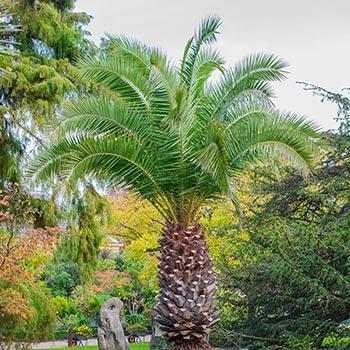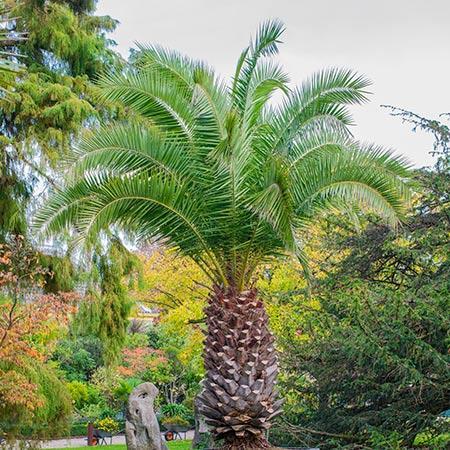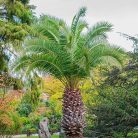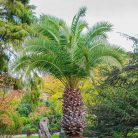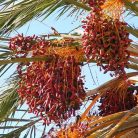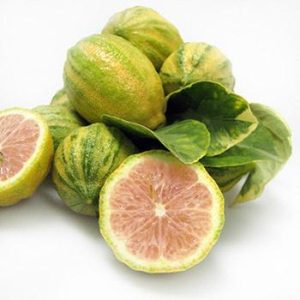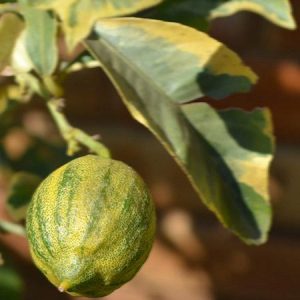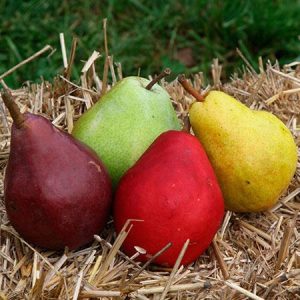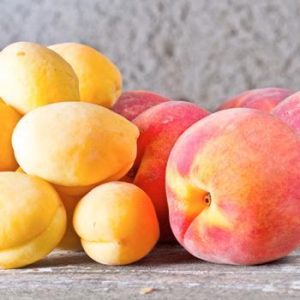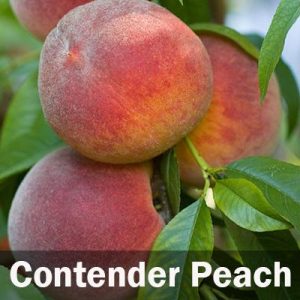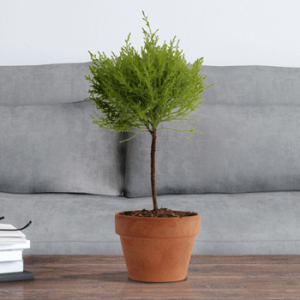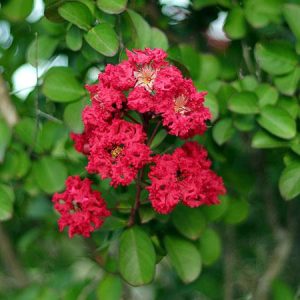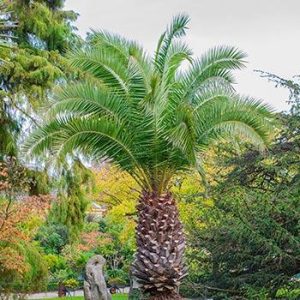Sylvester Palm Online
- Estimated Delivery : Up to 4 business days
- Free Shipping & Returns : On all orders over $200
An Elegant Low Maintenance Palm
If you ve always wanted to bring the tropics to your yard, then this is the palm for you. Sylvester Palms grow in a variety of climates and soils. They re extremely drought tolerant and low maintenance. Plant them, and watch them grow.
This Date Palm variety has the beautiful look that landscape designers are searching for. Their silvery blue-green leaves provide dazzling color that causes people to stop and stare. They have a unique diamond pattern on their trunk that gives it a textured look.
Their long weeping branches spread into a circular canopy for a perfectly symmetrical look. It sits perfectly atop a long trunk. Golf courses and resorts are just dying to get their hands on these, and you can have them in your own yard.
Guests and neighbors won t know if they re near your home or a tropical getaway, especially when this palm starts to fruit and clusters of creamy white flowers emerge bright colored dates start to grow.
At first they re orange, and aren t ready to be harvested until they turn a dark purple to black color. Sylvester dates are commonly used for making wine and jams, but can be eaten fresh.
These popular palms sell out fast. Don t hesitate getting yours today, before they re gone!
Planting & Care
Sylvester Palms (Phoenix sylvestris) which are also known as “Date Palms” are very beautiful palm specimen. With their silvery, blue-green leaves flowing against their long, weeping branches that spread into a circular canopy for a perfectly symmetrical look. This variety performs best in USDA growing zones 4-11 on the patio and 8-11 in the ground in full sun. Sylvester palm are moderate growers, maturing to a height of 40-50 feet tall and 25 feet wide.
Location: Choose a location that receives a lot of sun (6-8 hours) daily with well draining soil.
Planting Directions (in the ground):
1) Dig your hole 2-3 times the width and slightly shallower than the root ball.
2) Loosen the soil, in and around the hole so the roots can easily break through.
3) Use your fingers to separate the roots of your Sylvester palm and gently position downward in the hole. The top of the root flare (where the roots end and the trunk begins) should be about an inch above the surrounding soil.
4) Hold the tree straight as you begin to backfill the site, tamping down the soil as you go.
5) When finished, apply water to settle the soil and remove any air pockets.
Planting Directions (potted):
1) Choose a container that is 1-2 times larger than the pot that the plant initially arrived in.
2) Use a quality acidic potting medium such as a palm or citrus mix.
3) Partially fill the container part way, position the palm and fill the remainder leaving a slight space from the rim of the pot.
4) Choose a location on the patio, backyard, or front side of the house providing it will receive full to partial sun.
5) Water until it begins to flow through the bottom drainage holes, keep the soil slightly moist but not saturated.
6) If bringing indoors during the winter, keep by a sunny window and water as needed. Avoid exposure to both drafts and heat from a window or vent.
Watering (in the ground): Palm trees are drought tolerant once established, but will require frequent watering as they establish. Allowing the soil to dry out will weaken the root system of the palm tree. Only allow the soil to dry 1-2 inches down before watering again. The frequency will depend on the climate and how much rain you receiving.
Watering (potted): Stick you finger into the potting soil down to a depth of 2 inches and feel around for any moisture. If the soil is drying out, go ahead and water until you see it escaping the drainage holes and then stop. If there is still moisture present, leave it be until it dries a bit more.
Pruning: Palms do not need much pruning except to remove damaged fronds. Be careful not to pull off any dead or damaged fronds as that can leave a wound behind. Always remove any damaged fronds by pruning them off with a sharp pair of sterilized pruners.
Mulch: To help enrich the soil and reduce growth competition from weeds, apply a heavy mulch around the trunk, using wood chips, cypress bark or lawn clippings. This will also help to reduce water consumption. Avoid letting the mulch touch the trunk as this can promote rot and or fungus.
Fertilizing: Nutrients are vital for palm trees to thrive. The sandy, well draining soils they prefer have a tendency for nutrients to leach away quickly. You can apply palm fertilizers that contain specific nutrients best suited for palms. The slow release of these nutrients will provide consistent, targeted feeding to help your tree grow strong and healthy. If you prefer, you can use a balanced fertilizer such as an 8-8-8 formula for quicker growth in spring and summer. To avoid yellowing and maintain a healthy shade of green coloring, feed your tree a few spoons full of Epsom salt or a fertilizer that contains nutrients like manganese which will prevent the yellowing and shriveling of the fronds.
| Size | 3 Gallon, 2-3 ft., 3-4 ft. |
|---|
